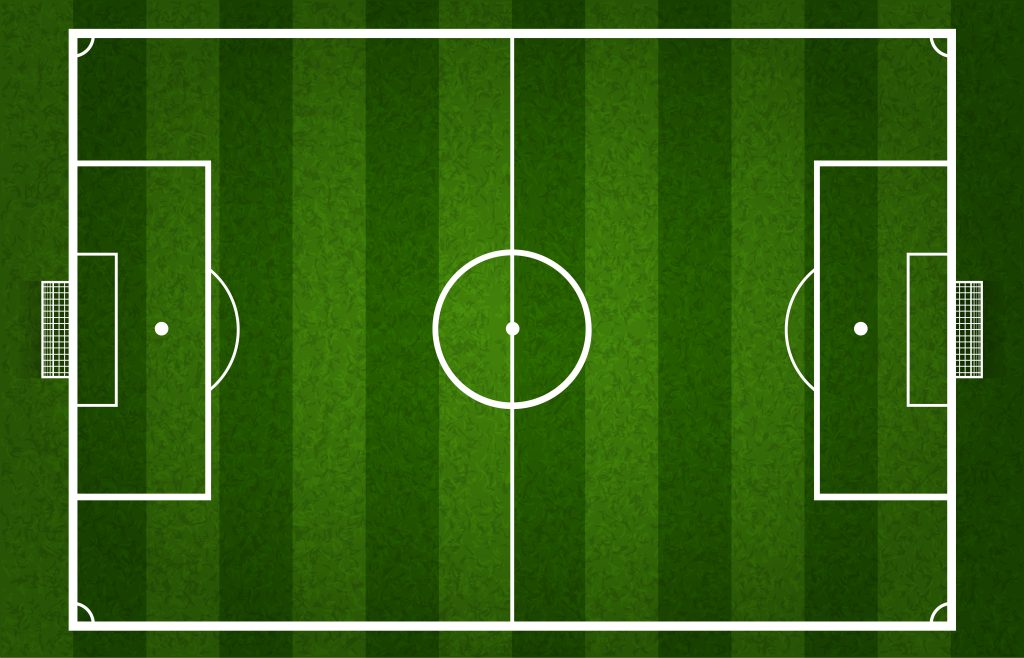Understanding the correct Football Pitch dimensions is essential for players, coaches, and even spectators in the UK. It doesn’t matter if you play locally or professionally; a big pitch allows for a smoother game than a small one. Dimensions are changed from league to league and from age category to age category for the benefit of the athletes. In this blog, we’ll break down the standard sizes, rules, and variations of Football Pitches used across the UK.
Why Are Football Pitch Dimensions Important?
Football Pitch size is more than just a measurement; it’s a factor that directly affects the style of play, stamina requirements, and tactical approaches in football matches. There are good reasons why pitch dimensions are so important to understand.
- Shapes Player Growth – Kids at an early age require smaller goals because it makes their skills sharper and their minds clearer.
- Influences the Way We Play – Larger fields mean long passes and fast wingers and smaller pitches match better with close passing.
- Provides Fairness – LRA plans make each team’s match uniform and allow everyone to play by the same rules.
- Provide Help : Helps school staff and groundskeepers make better plans for lawns, scheduled maintenance and reducing excess water.
The FA-Recommended Football Pitch Sizes by Age Group
- The Football Association (FA) provides clear guidelines for Football Pitch dimensions across different youth age groups to match developmental needs.
- U7 & U8: Play games using 5 players in a pitch 40 yards wide and 30 yards long.
For U9 & U10 age groups, the games are played with 7 aside (using a pitch 60 yards long and 40 yards wide). - U11 & U12: play 9-a-side on a field 80 x 50 yards.
- U13 & U14: Formats use 11 players played on a pitch measuring 90 by 55 yards
- At U15 and U16 ages: teams play 11-a-side in a field measuring 100 by 60 yards
- U17 and above: teams play in an official-size 11-a-side format (Pitch Measurement: 110-120 x 70-80 yards)
The recommended sizes are from FA and may be somewhat different depending on where and how the game is played.
Adult and Professional Football Pitch Dimensions
When it comes to adult leagues and professional clubs, the Football Pitch dimensions are slightly more flexible but must fall within certain FIFA regulations:
• Distance: 100 – 130 yards (90 – 120 metres)
* The chosen width should be 50 – 100 yards (45 – 90 metres).
* In the case of international matches, FIFA sets a tighter window of noise levels.
• Installed Length: 110 – 120 yards (100 – 110 metres)
• Width: should be between 70 and 80 yards (64 – 75 metres)
The dimensions at UK stadiums, for example at Wembley (115 x 74 yards), are set exactly according to the law of the game.

Surface Types and How They Change Field Size
Soccer fields in the UK come in grass, artificial (3G/4G), or hybrid varieties. The type of surface has an impact on upkeep and can even lead to small changes in size because of setup constraints.
- Natural Grass: Old-school but needs a lot of work. Requires regular cutting and water drainage.
- 3G Artificial Turf: Easy to take care of great for use all year in neighborhoods and schools.
- Hybrid Turf: Combines grass and fake fibers, found in top-notch stadiums to stay tough and consistent.
Pitch Size Differences in UK Leagues
Professional stadiums don’t always have the same pitch sizes. Here are some examples from big UK football clubs:
- Old Trafford (Manchester United): 105 x 68 metres
- Anfield (Liverpool): 101 x 68 metres
- Stamford Bridge (Chelsea): 103 x 67 metres
- Etihad Stadium (Man City): 105 x 68 metres
Even with small differences, all pitches follow FA and FIFA rules.
Creating or Marking a Football Pitch in the UK
Schools, academies, or local clubs that want to build or mark a Football Pitch should think about these key points:
- Follow FA Rules: Always check The FA Laws of the Game to stay in line with regulations.
- Look at Drainage and Ground: Make sure the spot is level, drains well, and isn’t in areas that flood.
- Get the Right Gear: Use strong goa lposts safe corner flags, and top-notch line markers.
Who Regulates Football Pitch Standards in the UK?
These organizations set and enforce Football Pitch standards:
- The Football Association (FA) – Main body governing grassroots and competitive football in England.
- County FAs – They consult and enforce at the local level.
- FIFA & UEFA – Their guidelines apply to international matches.
- School and Club Boards – They set practical standards for pitches at schools and in communities.
To keep pitches safe and up to standard, people carry out regular checks, inspect the grounds, and register with leagues.

How to Pick the Right Pitch Size for Your Team ?
The right Football Pitch size matters a lot. It depends on the level, age group, and type of game:
- Youth Teams: Pick sizes that fit the age group to boost learning and cut down injury chances.
- School Competitions: Stick to FA and school board rules without fail.
- Sunday Leagues: Pick fields that match your team’s fitness and game style.
- Women’s Leagues: Often use the same field sizes as men’s teams.
- Veteran Leagues (Over 35): Might like smaller fields to ease physical stress.
Football Field Layout: Last Words for UK Coaches, Players, and Organizers
Knowing and using the right Football Pitch sizes doesn’t just make the game fair and safe – it makes it better for everyone playing and watching. Whether it’s pitches for different ages or sticking to FA rules, these details matter at every level of UK football.
Before you plan or mark your next pitch always check the official guidelines like FA Laws of the Game to make sure you’re doing everything right.
When you get the hang of pitch sizes and rules, you’re not just following the book – you’re helping shape UK football’s future.
